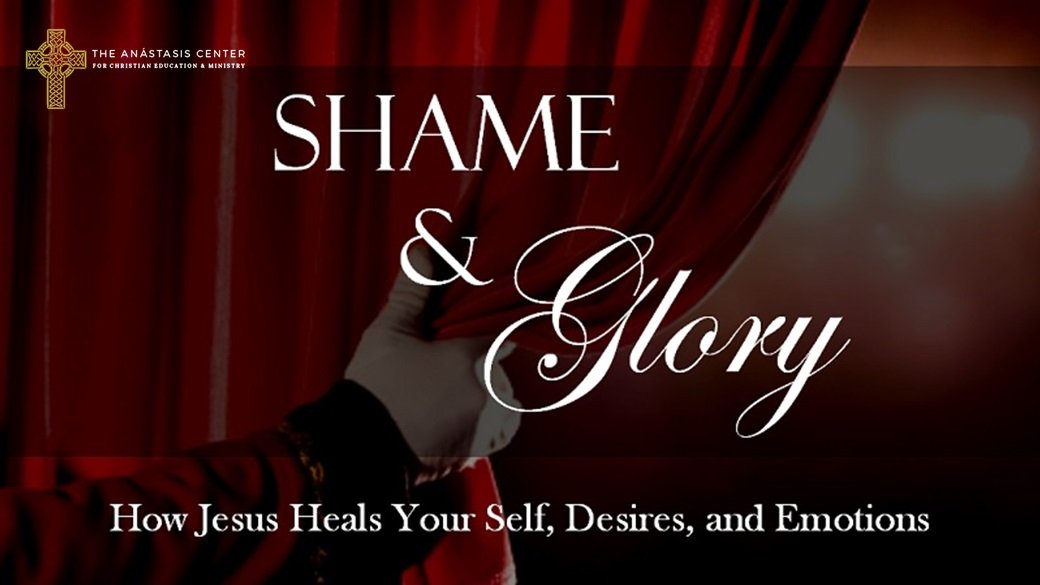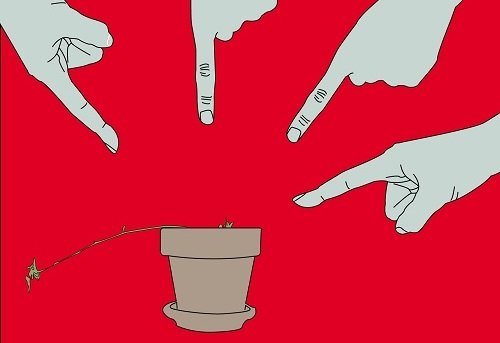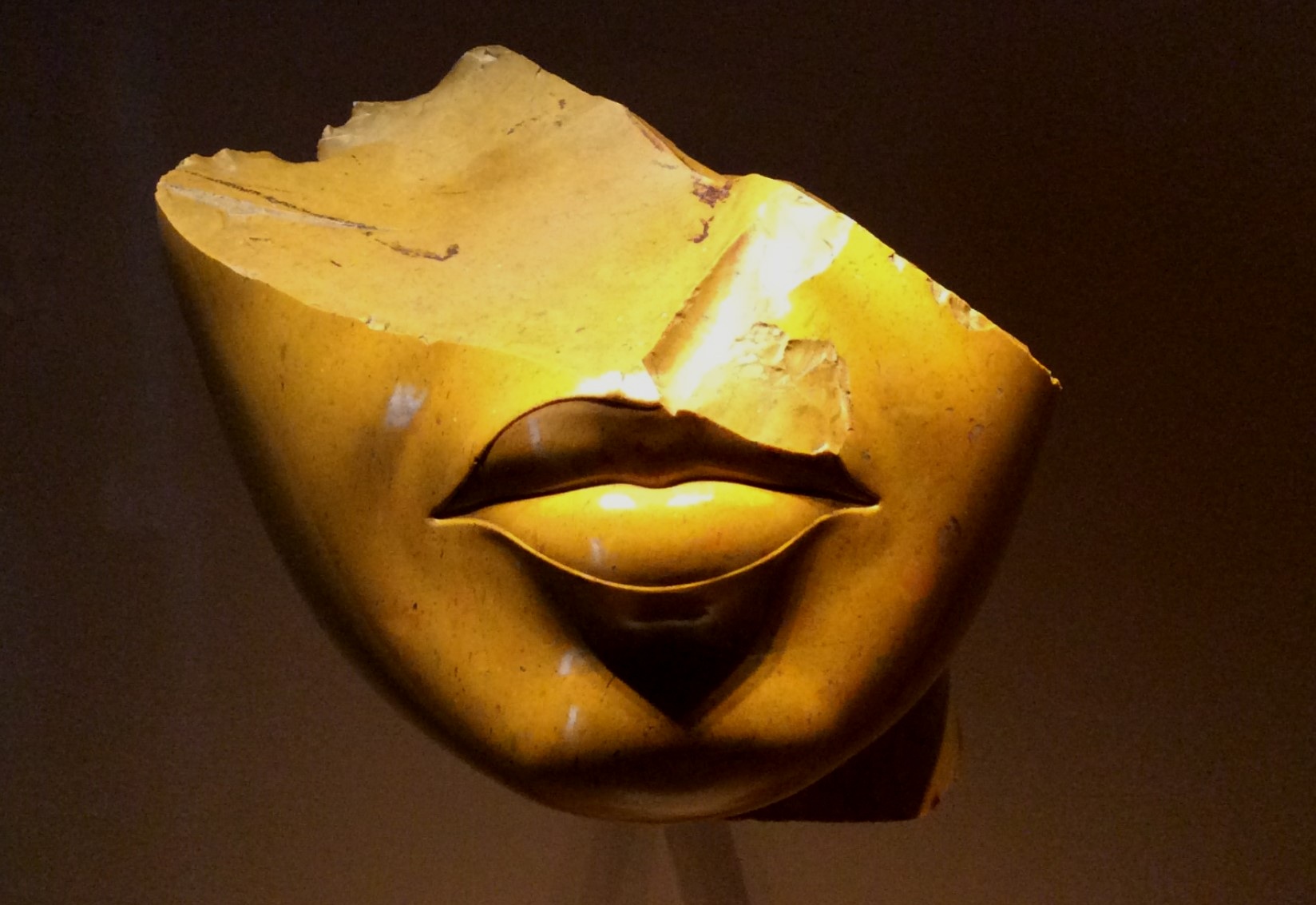Desire
Jesus Guides Us to True Beauty
Photograph: Monastery of Lorch, built in 1102 AD as a Benedictine monastery, in Württemberg, Germany. Photo credit: Unknown, Creative Commons. Christian monasticism developed partly to read and shape human desire in fellowship with Christ.
Introduction
God created human beings in His image, called us to grow in His likeness, and gave us good desires so we could pursue that growth. This means that God invested human beings with desires for beauty, goodness, justice, love, connection, significance, knowledge, and newness, to lead us to ultimately desire Him and His vision for growth in the creation. So we are human beings and human becomings, and our desires point us beyond our present selves and towards transcendence.
Our desires are certainly affected by the fall, when our human nature was corrupted. Even our sinful actions have a deep, good source, as often our desires and loves become distorted. But both the origin and goal of our truest desires are still good, and we must explore and cultivate them with Jesus.
Feel free to browse the links below. If you would like a bit more introduction, see the short video clips, which are from our 2019 Conference: Healing Atonement. They highlight the impact of Penal Substitutionary Atonement on our emotional development and community life, compared to Medical Substitutionary Atonement and its impact on our emotional life and health. And Protestants tend to focus on deeds alone, as if deeds alone possess merit or demerit. By contrast, earlier Christian tradition focuses on our desires, and the direction and strength of our desires, and what we do to nurture them with Jesus. Jesus saves us through our desires, because our desires are central to human becoming.
Messages and Resources on Desire
Desire: How God Draws Us to Himself
Facebook Live recording. Mako gave a message to his church, Neighborhood Church of Dorchester, on Philippians 2:12 - 13. Given on September 8, 2024. Message starts at the 44:45 minute mark. The main idea: God is at work in us to help us desire and do what pleases Him. Remember your first crush? Why do our romantic desires change and grow? From the garden, God made us to desire good things that point to Him, and left breadcrumbs of His goodness pointing to the Tree of Life. But the Fall shows us that human desires are also corrupted and can be corrupted further. We play a role in the formation of our desires in partnership with Jesus, because Jesus fixed and fulfilled human desires. God desires our desires.
How Our Desire for Beauty Points Us to Jesus
Facebook Live recording. Mako gave this message to his church, Neighborhood Church of Dorchester, on Matthew 17:1 - 10. Given on September 15, 2024. Message starts at the 20:35 minute mark. The basic idea: God made the fruit of creation delicious and beautiful. Humans can make food even more delicious and beautiful. So if there is beauty in creation, and if human beautifying is beautiful, then making the human more beautiful and less ugly is vital. This points us to Jesus, specifically his transfiguration of human nature, beautifying it with God’s glory, because Jesus overcame the ugliness in human nature without becoming ugly himself.
A curriculum for small group discussion or personal reflection. While healthy shame means regret, toxic shame is the desire to hide the self. Either way, glory is the response of God to invest Himself in us and renew His image in us. This material explores humanity as fundamentally good, but corrupted by sin, and not entirely in control of our own desires and emotions. Part of the spiritual and emotional struggle, then, is to know ourselves, know how God sees and loves us, and to receive into ourselves the Spirit of Christ. Peppered with insights from the early Christians, including some “desert fathers and mothers” who were the earliest “spiritual directors.”
A curriculum for small group discussion; a subset of the Shame and Glory material. Scripture often invites us to consider emotional language as it applies to God. Jesus also demonstrated very human emotions and called forth our participation in God’s joy, sorrow, etc. These passages give us valuable insights into God’s character and love for us. Part of our life with Jesus is to allow him to shape and reshape our emotions, that we would respond to others and circumstances with the consistency of Jesus. This guide helps us do that.
This blog post series relates to both the topic of atonement and the topic of desire because, like fallen Adam in the garden, we desire to deflect blame, and therefore we scapegoat others. On the political level, this builds group cohesion and creates a social outsider, who is blamed for the group’s woes, who the group must exile or kill or marginalize in order to maintain a hopeful lie. This series explores what political scapegoating has looked like in the U.S.
This video is part 5 of our series on The Theology of J.R.R. Tolkien’s The Lord of the Rings. It looks at Smeagol-Gollum and Boromir as case studies of human being and human becoming. Their choices towards addiction and freedom are vital to understand. Tolkien’s vision of what humanness means is rich, insightful, and sobering.
Our video series, The Theology of J.R.R. Tolkien’s The Lord of the Rings, is found on our Arts and Theology page and our YouTube channel, where we put brief descriptions of each video. It’s a great way to engage people who have an appreciation for the stories. Each video has questions for group discussion and/or personal reflection.
This video is part 6 of our series on The Theology of J.R.R. Tolkien’s The Lord of the Rings. It examines Tolkien's presentation of evil as a deviation from goodness, which acquires a deadly attraction and power over us. Evil is a self-deception, then becomes addictive, corrupting, and self-defeating.
This video is part 11 of our series on The Theology of J.R.R. Tolkien’s The Lord of the Rings. It shows how the noble pagan search for virtue ethics was a precursor to Christian love, hope, and faith. The Hobbits grow in love: from mere loyalty to the Shire to sacrificial love for all. Eowyn grows in hope: from hoping for a glorious death in battle to hoping that life and love will outlast death and violence. Finrod, and perhaps Andreth too, grow in faith: to believe that Eru must enter into Arda to heal the Marring.
00:06:43 Pippin and Merry Grow in Love
00:27:00 Eowyn Grows in Hope
00:40:49 Finrod and Andreth Grow in Faith in Eru
01:27:40 How Do We Know?
Slides to a presentation Mako Nagasawa gave to a class at Gordon-Conwell Theological Seminary in February 2024. Here is the English text of the treatise, which Ambrose wrote in 389. See video recording. Ambrose uses King Ahab as a case study of greed when he seized Naboth’s vineyard, in 1 Kings 21. This presentation relates to the Genesis creation story because Ambrose structures it around Genesis 1. He says that God gave all humans a shared dominion over the creation. In Christ, God gives us dominion, in principle, over sin. Covetousness, therefore, is a double problem. It interferes with the shared dominion over the creation, and it causes us to fail in exercising proper Christ-centered dominion over the sin in ourselves. Ambrose shows that Ahab became cruel, like the wild dogs that eventually fed off his dead, unburied body, as in 2 Peter 2:19 - 22. Ambrose also draws upon Matthew 6:19 - 24 because of how moths and rust share in our physical goods whereas God shares in the development of our moral goodness. Ambrose draws as well on Luke 12:13 - 34 because the greedy tear down barns/granaries and build bigger ones, finding more pleasure in the rising price of grain, not its widespread availability. A few slides refer to Ambrose’s understanding of the human being as a human becoming, Jesus’ work of atonement as a medical substitution healing human nature for us and inviting us to share in him, the pressing issue being human desires and not deservingness per se, and hell as the love of God but experienced by those who have become addicted to sin.
Slavery in the New England Colonies: Key Moments and Motivations. An outline (8 pages) of early events in the English Puritan colonization of New England. The outline draws on historical research to show how the Pequot War of 1637 - 38 was motivated, in large part, by financial reasons: The Puritans of Mass Bay Colony needed cheap labor, as the seven year contracts of English indentured servants were expiring, and the seven year monopoly on trade with Old England was expiring as well. New England then participated in the Triangular Trade, transporting enslaved Pequots and bringing back enslaved Africans. This outline focuses on stated motivations by the English settlers and slave traders involved. They drew on biblical language and categories but utterly betrayed Christian faith. It becomes clear how much greed was the sin motivating the others.
Text of a message on Exodus 3:1 - 12 given to Neighborhood Church of Dorchester in Boston, MA. When God appeared to Moses at the burning bush by Mount Sinai, (1) He was revealing Himself in Moses’ ordinary routine of tending sheep; (2) using the burning and climbing mountains motifs as symbolic of the refinement and strengthening of Moses’ character; and (3) retelling the story of the fiery sword outside Mount Eden, showing Moses that the way back home was there. This is a nice example of biblical patterns and intertexuality, with the application of God’s restorative, not retributive, justice, for the sake of our spiritual formation.
How Our Choices Shape Our Desires: Experiencing the Triune God
Text of a message from Genesis 1 - 2 and Proverbs 2, leading into questions for reflection and/or discussion. God made us to grow, and to develop our desires as we choose Him and the good He wants for us. This is why our desire to be more loving expands when we choose to be more loving, just as our palette is stretched when we eat more diverse food.
The Desire for a Happy Ending: Interpreting the Movies, Songs, and Stories Around Us
Slides to a presentation. We like happy ending stories because we long for an actual happy ending for the world. This workshop groups all belief systems into not happy ending vs. happy ending stories; and then internal vs. external villains.
Text of a message that reflects on our desire for love, meaning, and justice. Where do these desires come from? Are they connected to the God who reveals Himself in Jesus Christ? This might be called the “problem of goodness,” specifically human goodness. This was the first of three messages at a retreat. The second is Jesus Is God’s New Humanity, from Romans 5:12 - 21. This message explores how Jesus became a “new Adam,” fulfilling the role that God originally set forth for Adam and Eve. The third was God's Victory Over Human Evil in Jesus — the text of a message from Romans 6:1 - 11 about how Jesus’ death and resurrection was the way he triumphed over the corruption of sin in the human nature he took on, and how we die and rise with Jesus to share in that victory.
Desires, Beliefs, and How We Know Truth
This is a presentation on how desires are a consideration, but not the first, in how we know truth. Our desires suggest that we have both good and evil in us. This does not prove, but agrees with, the biblical story. After all, we are made in the image of God and wounded by sin. Some desires can be taken up and expanded by Jesus; other desires, Jesus reshapes or transforms. Also, belief systems have an implied story and metaphysics, which results in an ethics, and contains an epistemology, which is a way by which we can examine whether it is true. A 15 minute read.
Slides of a presentation given to the 2022 Reconstruction class. This material explores the biblical theme of human being and human becoming. God created us with good desires for more goodness and beauty, as well as the freedom to determine the direction of our love as constituting our human becoming. The biblical motif of meeting God on mountains is important. We glance at various Christian leaders, but do a deeper dive into Gregory of Nyssa’s Life of Moses, in his interpretation of Moses meeting God on Mount Sinai, and returning with shining face.
Your Personality, Desires, and Spirituality
Chart and text of a message that groups people into the four main Meyers-Briggs Temperament Indicator typology: NF’s who desire identity and personal growth; NT’s who desire impact, vision, and significance; SJ’s who desire to belong to a meaningful community; and SP’s who desire adventure and meaningful experiences. The message highlights likely core sins; suggested biblical passages that would help each type; resources that each type would likely enjoy; and likely contributions to a ministry. Read this critique of the MBTI, however.
Jesus' Mission and Passion: Being Light in Darkness
Text of a message on Ephesians 5:8 - 14, which uses the image of being light in darkness. The challenge of Jesus is to be different and involved, not separate and similar. This message addresses social and interpersonal tension that is sometimes associated with being a missional Christian.
Christian Spiritual Development Based on the Gospels: A Diagram
Slides to a presentation based on the structure of the Gospel of Matthew, and how Jesus’ Great Commission is built on the faith, desires, character, and skills that he was building in his disciples. It uses UCLA Basketball Coach John Wooden’s “Pyramid of Success” and translates it into a diagram for Christian growth. This presentation connects these stages or challenges to various resources on this website.
Developing a Spiritual Rhythm of Life to Cultivate Godly Desires
Text of a message or workshop on how to pray about and write a monastic “rule of life,” or “rhythm of life.” This is a very important tool, as it can function in the Christian’s life as a spiritual fitness plan, or health regimen. It discusses spiritual disciplines in daily, weekly, monthly, etc. frameworks, as well as how to choose some that bring you joy and rest, challenge your flat sides, and build your skills.
Beauty's Transformation of the Ugly in Gregory of Nyssa's Life of Moses
An essay for Dr. Maximos Constas and Dr. Evie Holmberg, for their respective classes at Holy Cross Greek Orthodox Seminary, Fall 2018; examines Gregory's work (c.390 AD) as a critical engagement with the Platonic tradition on beauty and desire, especially Origen and Plotinus; pays special attention to Gregory's statements about Jesus' atonement
HonorShame blog, Nov 11, 2015. “Then a few years later, when I was asked to preach Romans 6:1-11, I floundered and fumbled. I expected Paul to say, “Shall we sin that grace may abound? By no means! …Don’t you know how much Jesus/God sacrificed for you?” But Paul was not cultivating the gratitude or the debt-obligation motivation. He did not say, “Jesus died instead of you.” Rather, he said, “Jesus died, and you died with him; he rose, and you rose with him.” Jesus didn’t die instead of me. He died ahead of me… Even though gratitude was a command in itself, he never uses gratitude as a motivation for more obedience. That was liberating. I no longer felt like God saw me as a burden. I knew He treasured me, because He wanted to recover His image in me, clean it off, and shine through me by joining Himself to me by the Spirit.”
Conversation Stations
These are the images used in artistic physical displays. They are survey questions and conversation starters that are topically and thematically organized. They demonstrate how Jesus is relevant to each topic or theme. You can also just view the images on your device. If you would like, see all our Conversation Stations; below are the ones that relate to the topic of Desire.
Find Your Heart's Desire? (and instructions and theological essay)
Is a Good Friend Hard to Find? (and instructions and conversation tree)
What Story Do You Live In? (and associated message)
Does the Good Outweigh the Bad? (and instructions)
Whose Justice? (and instructions and Christian Restorative Justice Study Guide)
Whose Justice? for Harvard Law School
What Can We Do About Evil? (and instructions and conversation tree) and smaller version and brochure version
Desire: Topics:
Here’s how to understand this section on Desire: We believe Jesus’ own human desires, journey, and teaching are normative for human becoming, so we pursue Christian Formation to help us better understand questions that come up as we pursue Jesus’ vision for human flourishing. Human Destiny itself is best understood through the lens of desire. We stay aware of research and reflections on human emotional and Moral Development. We are helped by insights into the mind-brain-body connection in Brain, Genes and Rest. We follow research and reflections on Friendship and Happiness. We track resources about Greed and how money makes us more greedy. Addiction and overconsumption challenges the notion that we are “sovereign individuals.” We maintain the biblical critique of interest rate Debt as a way people fund overconsumption and entrap themselves. Sex is part of human moral and emotional development; we critique the Sex Industry for how it distorts us.


















